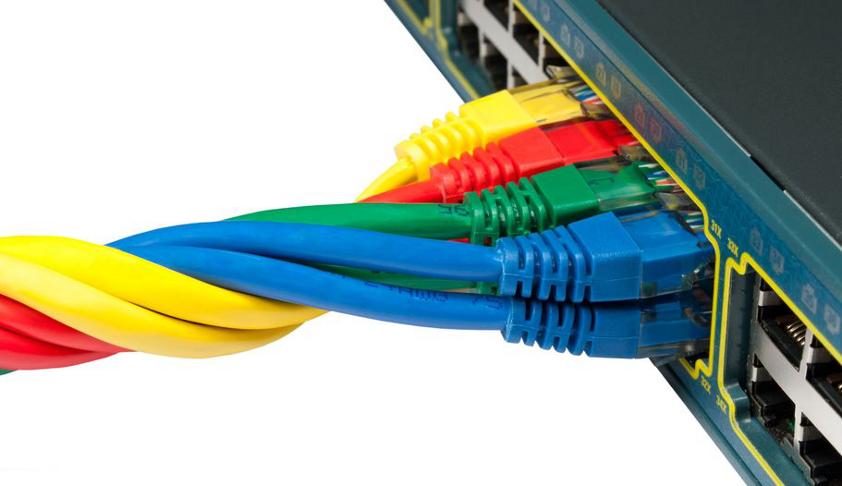Demystifying Ethernet Category Types
Ethernet represents the plumbing pipes of the Internet. Many network installers are familiar with Cat5e and Cat6 cables with RJ45 connectors. But the term “Ethernet”, co-invented by Robert Metcalfe, encompasses an entire range of twisted pair and fiber cables that are constantly being upgraded and standardized by the Institute of Electrical and Electronics Engineers known as IEEE. Each new iteration of Ethernet, or category, supports increasingly faster bandwidth speeds.

Cat3 cable is an earlier generation of Ethernet but can still be seen in older deployments. With the ability to support a maximum frequency of 16 MHz, this type of Ethernet can still be used for two-line telephone systems and 10BASE-T networks. CAT3 cable can also be used for alarm system installation or similar applications. CAT3 cable can have 2, 3, or 4 copper pairs (though uncommon). Category 5e cable however, has become the default Ethernet category of choice with the ability to support faster speeds and frequencies.
Cat5 Ethernet, introduced 10/100 Mbps Ethernet, also known as Fast Ethernet. Even though some older deployments still use CAT5 cable, it is now considered obsolete and has since been replaced by Cat5e.
Although Cat5 and Cat5e cables are physically similar, Category 5e Ethernet adheres to more stringent IEEE standards. Cat5e is the most common type of cabling used for deployments due to its ability to support Gigabit speeds at a cost-effective price. Even though both Cat5 and Cat5e support a maximum frequency of up to 100MHz, Cat5e has completely replaced its predecessor. Gigabit Ethernet utilizes 4 data pairs in comparison to Fast Ethernet which utilizes 2 data pairs.
Cat 5e is perfectly fine. Many companies are placing more and more servers on the cloud. This means that if everything you do is on the cloud, and you require very little internal networking, your limiting factor will not be the type of cable, but the speed of your Internet. Quite likely, Cat 5e will achieve faster connections than your Internet speed, making Cat 5e the choice of most users.
Cat6 network cables have been around for only a few years less than Cat5E cables. However, they have primarily been used as the backbone to networks, instead of being run to workstations themselves. The reason for this (beyond cost) is the fact that, while Cat6 cables can handle up to 10 Gigabits of data, that bandwidth is limited to 164 feet — anything beyond that will rapidly decay to only 1 Gigabit (the same as Cat5E).
Cat6 wiring can support up to 10 Gbps and frequencies of up to 250 MHz. While Cat5e cable features 1.5-2 twists per cm, Cat6 cables are more tightly wound and feature 2 or more twists per cm. Cat6 cables also sport thicker sheaths compared to Cat5e. Though standard Ethernet supports distances of up to 100 meters, CAT6 cable only supports 55 meters when transmitting 10Gbps speeds. Even though Cat6 and Cat6a cabling offers higher performance rates, many LANs still opt for CAT5e due to its cost-effectiveness and ability to support Gigabit speeds. When transmitting at 10Gbps speeds, Cat6 cables only support a maximum distance of 37 meters.
Cat6a can support bandwidth frequencies of up to 500 MHz, twice the amount of Cat6 cable, and can also support 10Gbps like its predecessor. However, unlike Cat6 cabling, Cat6a can support 10 Gigabit Ethernet at 100 meters. Cat6a cabling on the other hand, can transmit the same speeds at up to 37 meters. Cat6a also features more robust sheathing which eliminates alien crosstalk (AXT) and improves upon the signal-to-noise ratio (SNR). The stronger sheathing makes Cat6a cabling considerable thicker than Cat6.
Cat7 can also support 10 Gbps, but laboratory testing has successfully shown its ability to transmit up to 40 Gb at 50 meters and even 100 Gb at 15 meters. The cabling can support frequencies of up to 600 Mhz. Cat7 offers extensive shielding to reduce signal attenuation and is relatively stiff in comparison to previous generations of cabling. The shielding needs to be grounded and Cat7 also requires special GigaGate45 (CG45) connectors.
Which type of Ethernet cable you should choose depends on your specific applications and requirements. When you plan to purchase Ethernet cables, you need to consider their differences like transmission distance, cost, durability, etc. Hope this post would help you choose the suitable cable and build a high-performing and future-proofing network.

